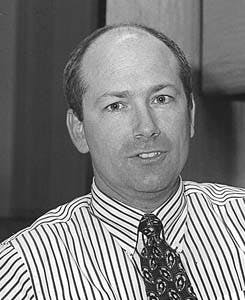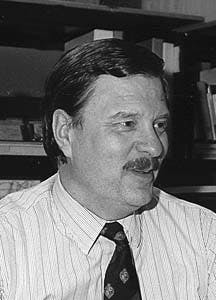Argentine gas plant expansion makes most of existing infrastructure
Kevin Kernan, Daniel CarranzaExpansion currently under way at a large gas-processing plant near Bah!a Blanca, Argentina, illustrates how incremental projects "leveraged" off existing facilities can be built at reduced investment.
Transportadora de Gas del Sur S.A.
Buenos Aires
For $60 million, Transportadora de Gas del Sur S.A. (TGS) is increasing capacity at the General Cerri gas-processing plant by a net 17 million cu m/day (490 MMcfd) and storage capacity by 45,000 cu m. To build these facilities from scratch would cost as much as $150 million.
By taking advantage of, or "leveraging" off, the infrastructure in place (land, compression, pipelines, water, and electricity), the project is capitalizing on existing gas flows.
TGS is South America's largest gas pipeline company and processes most natural gas in Argentina. Transportation capacity is 54 million cu m/day (1.9 bcfd) through three major pipelines, one from southern Argentina, and two from the west.
Fig. 1 [36184 bytes] shows how the three pipelines converge at TGS' General Cerri complex where all the gas is available for processing.
Current operations
Besides 45,000 hp for transportation compression, the Cerri complex includes two processing plants: the cryogenic plant with capacity of 23 million cu m/day (812 MMcfd) and a lean-oil absorption plant with capacity of 6.5 million cu m/day (230 MMcfd).
The cryogenic plant, being more efficient, extracts ethane to support the local petrochemical industry.
Fig. 2 [28306 bytes] shows the gas volumes that reach Cerri are seasonal, based on the downstream demand in Buenos Aires. The existing processing capacity is only sufficient to process the base annual volumes.
And with the expected annual transportation capacity growth of 2 million cu m/day (71 MMcfd), the existing facilities would not fully exploit the liquids value in the gas stream.
The key business development challenge is to design a cost-effective expansion that would economically extract incremental liquids to benefit TGS and its customers.
Expansion
When it began operations in December 1992 upon the privatization of Gas del Estado, TGS focused on increasing operational efficiency, eliminating bottlenecks, reducing costs, and expanding the pipeline.
These same efforts were also applied to the processing business except for expansion. The Cerri complex is well situated with sufficient infrastructure, land, compression, water, and electricity, to support a significant expansion.
The focus of the expansion has been the cryogenic plant built by Gas del Estado in 1981. The contractor was Techint; Fish Engineering's processing technology was used.
The plant is a saddle unit taking natural gas from the three pipelines that reach Cerri: the Neuba I, San Martin, and Neuba II.
The first two are designed to operate at 60 kg/sq cm (852 psig), the third one is designed to operate at 70 kg/sq cm (994 psig).
As Fig. 3 [34931 bytes] shows, the plant has three GE-Elliott turbocompressors with 25,000 hp (ISO) each, driving two processing trains. Each machine has a booster compressor and a residual-gas compressor driven by the GE gas turbine.
The essence of the expansion has been to take advantage of the spare horsepower by constructing a third processing train and dedicating one compressor to each train, as Fig. 3 indicates.
The net expansion is 17 million cu m/day (600 MMcfd), 1 million cu m/day (35 MMcfd) from existing trains and 16 million cu m/day (565 MMcfd) from the new train.
The total investment is estimated to be $38 million. This expansion will be in-service second quarter 1998.
The plant was originally built with two processing trains each rated at 9 million cu m/day (318 MMcfd), a fractionation train, and a CO2-removal unit from the ethane stream.
Generous overdesign factors allow TGS to operate the cryo unit processing 23 million cu m/day (812 MMcfd), with the three turbocompressors.
Supported by Ortloff Engineers Inc., Midland, Tex., TGS evaluated the requirements to reach a design capacity of 24 million cu m/day (847 MMcfd), operating with one turbocompressor in each of the existing Trains A and B as a way to free one turbocompressor to be used with the new Train C.
The study showed that the key modifications to the plant to reach this capacity are:
- The turboexpanders needed to be modified with new wheels, shafts, and variable nozzle assemblies.
- The booster and residual gas compressors for each train needed to be rewheeled.
- Additional aftercoolers
The third turbocompressor will be used to build a new Train C with an ultimate capacity of 16 million cu m/day (565 MMcfd). This unit will be operated to recover propane plus or ethane plus products, depending on the ethane demand.
This unit will process gas of the Neuba II pipeline, with enough flexibility to operate in a range of 9-16 million cu m/day (318-565 MMcfd) gas flow.
This expansion is directed at processing a large portion of the seasonal volumes at the Cerri complex. The incremental volumes of propane, butane, and gasoline are 300,000 tons/year. Additional quantities of ethane can be obtained.
The investments to increase the ethane recovery to 1,900 tons/day are to add a new de-ethanizer tower and to modify the two existing processing trains to increase the ethane yield.
An additional incremental expansion is feasible to recover up to 2,400 tons/day of ethane based on the uprating of the GE gas turbines and changes in the compressors.
Storage expansion
TGS' liquids storage lies 16 km from Cerri at Puerto Galv n. The two facilities are connected by two liquids pipelines (Fig. 4 [45460 bytes]).
At present, Puerto Galv n has 25,000 cu m of pressurized storage. The facility has access to a port with 42-ft draft with a length of 250 m.
A key aspect of the processing expansion is that the incremental liquids cannot be absorbed by the local market. Argentina is a net exporter of LPG.
Any incremental product will result in more exports. For TGS efficiently and economically to evacuate more product from Cerri requires an expansion of the storage facilities.
Today, TGS is at a disadvantage in the export market because of its pressurized storage: The ship size is small and the transport fees on a unit basis are high.
Given the incremental product and lower unit shipping cost, an expansion of the liquid storage facility is both required and economic.
The new facilities will include two refrigerated tanks, one of 30,000 cu m and the other of 15,000 cu m. This will enable vessels of up to 50,000 cu m to be loaded at the port.
The tanks of single wall design will be built by CBI. The loading facilities will also be upgraded to handle the increased filling rates. The estimated investment is $22 million.
Operation of the expanded storage will coincide with start-up of the processing expansion. After this expansion, the Puerto Galv n facility will have sufficient land available to add an incremental 50,000 cu m of refrigerated storage at low investment costs.
Once both expansions are in-service the operation of Cerri Complex will fundamentally change.
As Fig. 5 [22261 bytes] shows, the cryogenic plant will function as the base-load plant but with sufficient operating flexibility to handle seasonal dips in volumes.
The lean-oil absorption plant will function only as a seasonal facility (Fig. 6 [59292 bytes]).
The Authors
Kevin Kernan is vice-president for marketing and rates for Transportadora de Gas del Sur S.A., Buenos Aires, where he has worked since September 1995. Before that time, he was vice-president for financial planning and analysis at Enron, Houston, and also worked for Arthur Andersen, 1978-1981. Kernan holds a BS in business administration from the University of Nebraska.
Daniel Carranza is LPG marketing manager for TGS, having joined the company in 1992. Previously, he worked for Dow Chemical and Enron. He holds a degree in chemistry from the Universidad de Buenos Aires and an MS in chemical engineering from the University of Texas at Austin.© 1997 PennWell Publishing Company


